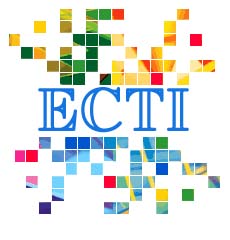Policies for Channel Allocation in Cognitive Radio Networks using Game Theory
Main Article Content
Abstract
Cognitive radio networks evolve according to the actions of selsh users who act independently. The eventual state reached in most of the cases by such a system is a Nash Equilibrium (NE). Multiple NE with dierent quality may exist. In this work we consider the problem of allocating channels to multiple transceivers. Based on policies derived from various network metrics we develop a way to initialize the allocation and choose the appropriate channel for each user to push the system towards a higher normalized cumulative total throughput of the CRN. A novel equation to allocate channels is also derived. The improvement is conrmed by our simulation results.
Article Details
This journal provides immediate open access to its content on the principle that making research freely available to the public supports a greater global exchange of knowledge.
- Creative Commons Copyright License
The journal allows readers to download and share all published articles as long as they properly cite such articles; however, they cannot change them or use them commercially. This is classified as CC BY-NC-ND for the creative commons license.
- Retention of Copyright and Publishing Rights
The journal allows the authors of the published articles to hold copyrights and publishing rights without restrictions.
References
[2] FCC Spectrum Policy Task Force, "Report of the spectrum efficiency working group," FCC Reports, http://www.fcc.gov/sptf/reports.html, Nov. 2002.
[3] Komolkiti, P., Vattanaviboon, K., Aswakul, C., "Cooperative and Non-cooperative Power Control Games in Downlink Cognitive Radio Network with Primary User Protection," International Conference on Electronics, Information and Communications (ICEIC), pp.1-2, 2014
[4] Renchao Xie, Hong Ji, Pengbo Si, Yi Li., "Dynamic Channel and Power Allocation in Cognitive Radio Networks Supporting Heterogeneous Services," IEEE Global Telecommunications Conference (GLOBECOM), pp.1-5, 2010.
[5] Attar, A., Nakhai, M.R., Aghvami, A.H., Cognitive Radio game for secondary spectrum access problem," IEEE Transactions on Wireless Communications, vol.8, pp.2121-2131, 2009.
[6] Yi-Bing Li, Rui Yang, Fang Ye, "Non-cooperative spectrum allocation based on game theory in cognitive radio networks," IEEE Fifth International Conference on Bio-Inspired Computing: Theories and Applications (BIC-TA), pp.1134-1137, 2010.
[7] Jianwei Huang, Randall A. Berry, and Michael L. Honig, "Distributed Interference Compensation for Wireless Networks," IEEE Journal on Selected Areas in Communications, Vol.24, No.5, pp.1074-1084, May 2006.
[8] Youping Zhao, Shiwen Mao, James O. Neel, Jeffrey H. Reed, "Performance Evaluation of Cognitive Radios: Metrics, Utility Functions and Methodlogies," Proceedings of the IEEE, Journals and Magazines, Shared Spectrum Co., Vienna, VA, Vol: 97, Issue: 4, pp:642-659, April 2009.
[9] Rahman, M.M., Charoenlarpnopparut, C., Suksompong, P., Taparugssanagorn, A., "Spectrum Hole Identification in Multiple TV bands by Adaptive Threshold Multi-Taper Spectrum Estimator for Cognitive Radio," 2013 International Conference on Electrical Information and Communication Technology (EICT), pp1-6, 2014
[10] Bhattarai, A.; Komolkiti, P.; Aswakul, C. "Improved bandwidth allocation in Cognitive Radio Networks based on game theory," IEEE Publisher; ECTI-CON, Krabi, pp 1-6, 2013.
[11] Bhattarai, A.; Charoenlarpnopparut, C.; Suksompong, P.; Komolkiti, P., "Developing policies for channel allocation in Cognitive Radio Networks using Game Theory," IEEE Publisher; ECTI-CON, Nakhon Ratchasima, pp 1-6, 2014.
[12] Dharma Prakash Agrawal, Qing-An Zeng, "Introduction to Wireless and Mobile Systems, 3.4 Free Space Propagation," Cengage Learning, 3rd Edition, pp 60-65, 2011.
[13] J. Mitola, "Cognitive Radio," Licentiate proposal, KTH, Stockholm, Sweden, Dec. 1998.
[14] Yonghong Zhang and Cyril Leung, "A Distributed Algorithm for Resource Allocation in OFDM Cognitive Radio Systems," IEEE Transactions on Vehicular Technology, Vol. 60, No. 2, pp 546-554, Feb 2011.
[15] Mikio Hasegawa, Hiroshi Hirai, Kiyohito Nagano, Hiroshi Harada and Kazuyuki Aihara, "Optimization for Centralized and Decentralized Cognitive Radio Networks," IEEE Proceedings, Vol. 102, No. 4, pp 574-584, April 2014.
[16] Khajonpong Akkarajitsakul, Ekram Hossain, Dusit Niyato, and Dong In Kim, "Game Theoretic Approaches for Multiple Access in Wireless Networks: A Survey," IEEE Communications Survey and and Tutorials, Vol. 13, No. 3, 2011.
[17] Jeffrey G. Andrews, Holger Claussen, Mischa Dohler, Sundeep Rangan, Mark C. Reed, "Femtocells: Past, Present, and Future," IEEE Journal on Selected Areas in Communications, Vol. 30, No. 3, APRIL 2012.
[18] Kun Zhu, Dusit Niyato, Member, IEEE, Ping Wang, Member, IEEE, and Zhu Han, "Dynamic Spectrum Leasing and Service Selection in Spectrum Secondary Market of CRN," IEEE Transactions on Wireless Communications, Vol.11, No.3, March 2012.
[19] Fan Jiang and Benchao Wang, "A Cooperative Bandwidth and Power Allocation Strategy Based on Game Theory in Multi-Relay Networks," International Conference on Wireless Communications, Networking and Mobile Computing, pp.1-5, 2011.
[20] Yucek T., and Arslan H., "A survey of spectrum sensing algorithms for cognitive radio applications," IEEE Communications Surveys and Tutorials, vol.11, pp.116-130, 2009.
[21] John Nash "Non-Cooperative Games," The Annals of Mathematics, Second Series, Vol.54, No.2, pp 286-295, Sep., 1951.
[22] Ryan Porter and Eugene Nudelman and YoavShoham, "Simple Search Methods for Finding a Nash Equilibrium," Games and Economic Behavior, 63(2), pp.642-662, 2008.
[23] Michael G. and H. Bell, "The Use of Game Theory to Measure the Vulnerability of Stochastic Networks", IEEE Transactions of Reliability, Vol.52, No.1, March 2003.
[24] K. J. Ray Liu and Beibei Wang, "Cognitive Radio Networking and Security, A Game-Theoretic View," Cambridge Books Online, Cambridge University Press, 2012.
[25] Andrea J. Goldsmith, and Pravin P. Varaiya, "Capacity of Fading Channels with Channel Side Information," IEEE Transactions on Information Theory, Vol.43, No.6, pp. 1986-1992, November 1997.


